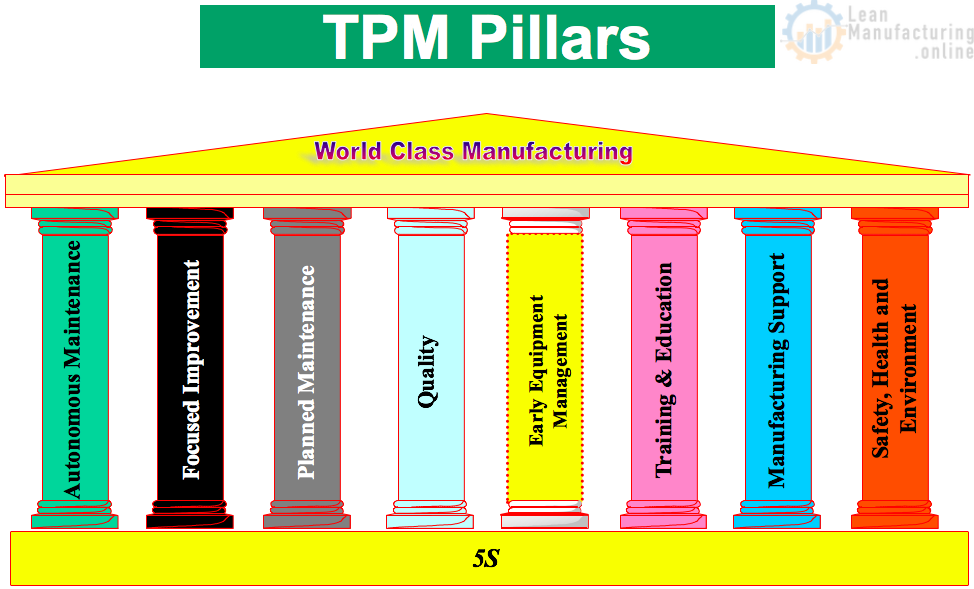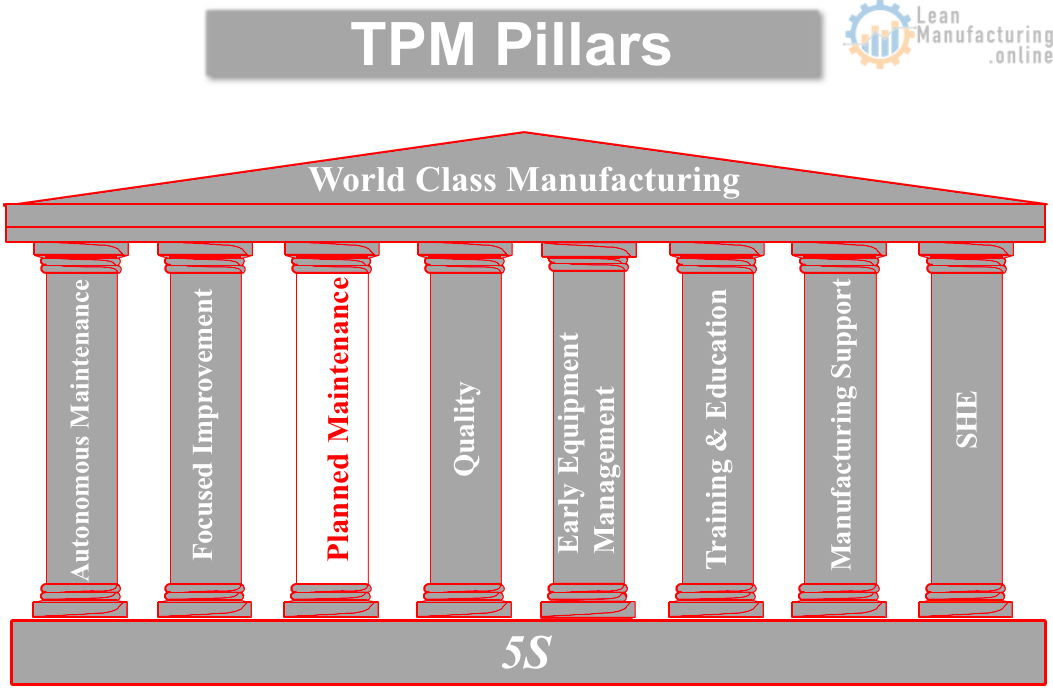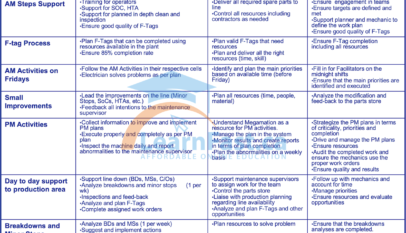Total Productive Maintenance (TPM) is an approach that has transformed how organizations maintain their equipment and optimize plant maintenance operations. This blog post will delve into the three parts of TPM and the eight-pillar activities that serve as the foundation for planned maintenance.
Approach to Plant Maintenance (Management Concept of Maintenance)
TPM Part I:
- Is there sufficient commitment to breaking away from breakdown maintenance and setting up a PM system?
- Do operators sufficiently understand the importance of their participation in plant maintenance?
TPM Part II:
- Are efforts made to shift from TPM to CBM (Condition-Based Maintenance) from a predictive maintenance point of view?
- Are both the operating sector and maintenance sector working to build a new approach to maintenance systems?
TPM Part III:
- Is the optimum form of maintenance always selected, with costs also considered in monitoring under CBM?
- Is a comprehensive new maintenance system established?
Eight-Pillar Activities of Planned Maintenance
- Manufacturing Support Activities
- TPM Part I: Is autonomous maintenance sufficiently supported?
- TPM Part II: Has part of the maintenance work shifted from the professional maintenance sector to the operating sector?
- TPM Part III: Is a support system established in which operators consider themselves part of the plant maintenance unit?
- Activities to Reduce Failures to Zero
- TPM Part I: Are failure analysis, recovery, and improvement sufficiently carried out, and have significant reductions in sporadic failures been achieved?
- TPM Part II: Is the relationship between equipment and quality understood, and is plant maintenance for zero quality defects in place?
- TPM Part III: Is a plant maintenance system for zero failures and zero defects firmly entrenched?
- Establishment of a Maintenance Plan Management System
- TPM Part I: Are maintenance standards prepared and is PM carried out according to a maintenance calendar?
- TPM Part II: Is maintenance work being reviewed and is IT adopted to enable economical, planned maintenance?
- TPM Part III: Is plant monitoring pursued from a variety of angles?
- Creation of a System for the Management of Maintenance Information
- TPM Part I: Are maintenance records sufficiently recorded, and is an information management system in place?
- TPM Part II: Is computer-based information management applied in PM?
- TPM Part III: How much progress has the plant made toward establishing an intranet to integrate production, quality, and equipment information?
- Spare Parts Management
- TPM Part I: Are spare parts purchasing and stock management conducted for planned maintenance?
- TPM Part II: Are corrective maintenance and inspection used to reduce the number of spare parts?
- TPM Part III: Can plant deterioration be analyzed using lubrication oil analysis?
- Creation of a Predictive Maintenance System
- TPM Part I: Is CBM introduced, and is diagnostic technology partially developed in-house?
- TPM Part II: Is the shift from TBM (Time-Based Maintenance) to CBM aggressively pursued?
- TPM Part III: Are aggressive measures taken to reduce the volume of oil used undertaken to conserve resources?
- Lubrication Oil Management
- TPM Part I: Are lubricating oil and operating oil managed, using an oil stand and the like?
- TPM Part II: Does the plant have any experts on equipment diagnosis? Is a system in place for the training of such people?
- TPM Part III: Can plant deterioration be analyzed using lubrication oil analysis?
- Training in Maintenance Skills
- TPM Part I: Are almost 100% of maintenance workers machine maintenance technicians?
- TPM Part II: Does the plant have any experts on equipment diagnosis? Is a system in place for the training of such people?
- TPM Part III: Is a training system in place for continuous passing-on of skills and advanced skills training?
Conclusion
The transition from reactive to planned maintenance through TPM is a critical strategy for sustaining operational efficiency and reducing unplanned downtime. By embracing the eight-pillar activities across the three parts of TPM, organizations can create robust maintenance systems that integrate predictive, condition-based, and autonomous maintenance activities. The key to success lies in the consistent commitment to continuous improvement and ensuring that both maintenance and operations teams are aligned with these strategic goals.
















